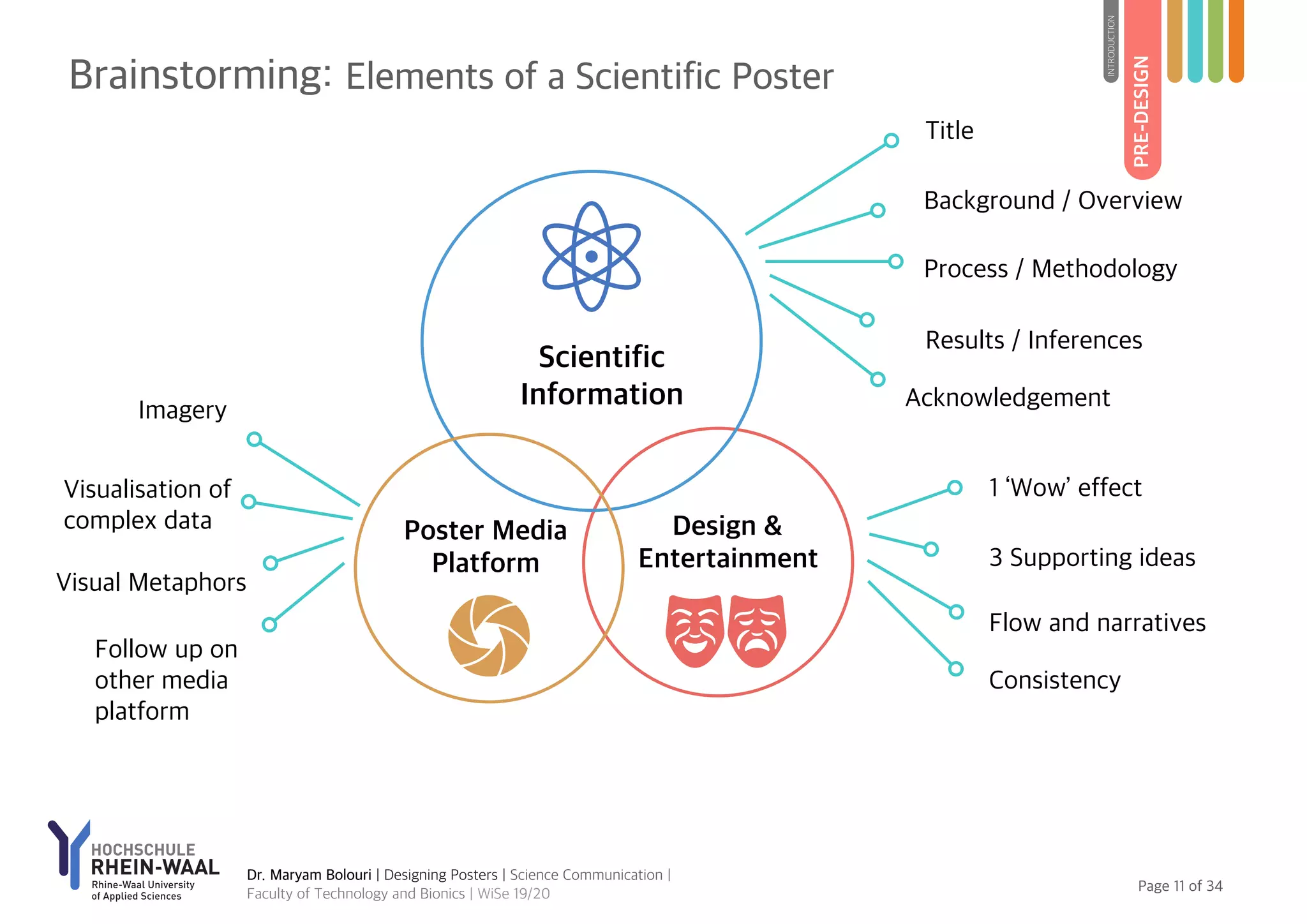The document provides an extensive guide on designing scientific posters, emphasizing communication strategies that merge science, media, and design principles. It outlines the stages of poster creation including pre-design planning, design principles, and post-design review, highlighting crucial elements like content structuring, typography, visual narratives, and audience context. The aim is to enhance the effectiveness of scientific communication through visually engaging and meaningful poster presentations.





![Page of5 34
What is Communication?
In the modern history, the concept of communication is
defined in different ways. The influential model is the
‘Mathematical Theory of Communication’ developed by
Claud E. Shanon during 1948 in the Bell Laboratory and
introduced to humanities by Warren Weaver. This theory
reduces the communication into a system of information
and it is essentially message-oriented model (see Bolouri,
2019).
During the expansion of the communication studies, many
theories from social science and anthropology, among
others, have been introduced to the field. These theories
highlighted communication as ‘a social function’, ’social
construction’, constituting social reality, or shaping
civilisation (see for example Raymond Williams, Harold
Innis, etc.).
The contemporary theories define communication not
merely as transmission of information, but as a process of
(re)constructing meaning. Accordingly, communication is a
dynamic and organic process of meaning-making. The
context, situations, settings, forms of mediation, inter alia,
can influence the constitution of reality and experience of
life (see Littlejohn & Foss, 2008).
From Intra-personal to Global communication
Communication may take place in various levels (see
McQuail, 2005).
✦ Intra-personal (e.g. cognition, ideation, creation,
expression of meaning at individual level)
✦ Inter-personal (e.g. the process of meaning-making
between two or more people)
✦ Intra-group (e.g. family)
✦ Intergroup or Association (e.g. community)
✦ Institutional or Organisational (e.g. business firm)
✦ Society-Wide or Public (e.g. national level)
✦ Global (e.g. intercultural and international level)
INTRODUCTION
Levels of Communication
Further Readings
Littlejohn, S. W. (2002).
Theories of Human
Communication. India:
Wadsworth.
‘We live in communication just
like fish live in water, wrapped
in but unconscious of
communication [processes] as
much as fish are unaware of
water’ (Hsia, 1988: p. 8).
Dr. Maryam Bolouri | Designing Posters | Science Communication |
Faculty of Technology and Bionics | WiSe 19/20
Intra-
Personal
Inter-Personal
Intra-Group
Inter-Group / Association
Institutional / Organisational
Society-Wide / Public
Global
Levels of Communication](https://image.slidesharecdn.com/designingscientificposterlecturee-notesmaryambolouri2019-200217145744/75/DESIGNING-POSTERS-Strategies-for-Communicating-Scientific-Projects-6-2048.jpg)




























